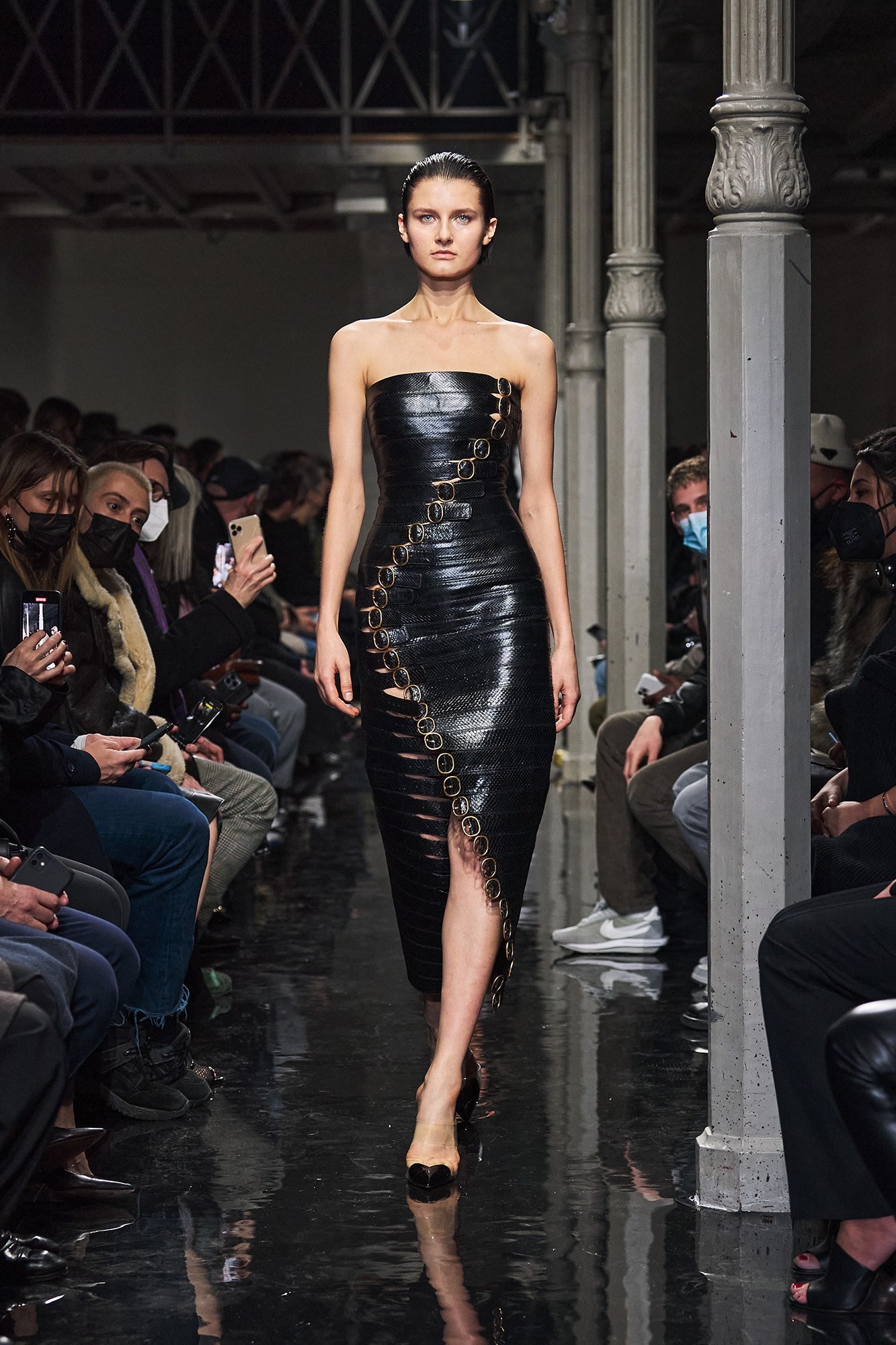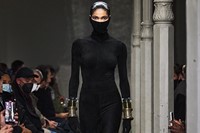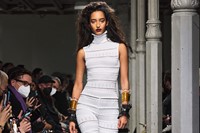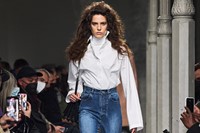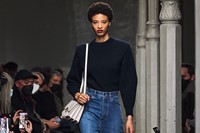Azzedine Alaïa was a man of legend. How about the story of the coat he created for Greta Garbo in the 1970s, brought to his former base on the rue de Bellechasse by Pauline de Rothschild? “She wanted a dark blue cashmere coat – big, bigger, biggest! And a huge collar to hide,” Alaïa once said. That coat – or, rather, its modern counterpart, re-proportioned and imagined, appeared on the catwalk of Pieter Mulier’s second Alaïa show. His models had their faces veiled, like Garbo – they borrowed her mystique, the enigma that surrounded her and Alaïa himself.
But Azzedine Alaïa was a man of paradox and contradiction. Alongside the enigmatic, there was the engaging, the egalitarian. His relationship to art, to artists, his love of design, of literature, was unique – especially in the way it all came together under his roof, and often at his kitchen table, intermingling different disciplines and mediums in constant and unexpected conversations. And how about how Alaïa adored fashion – his collection is one of the most important in the world – and yet refused to follow its rules or conventions?
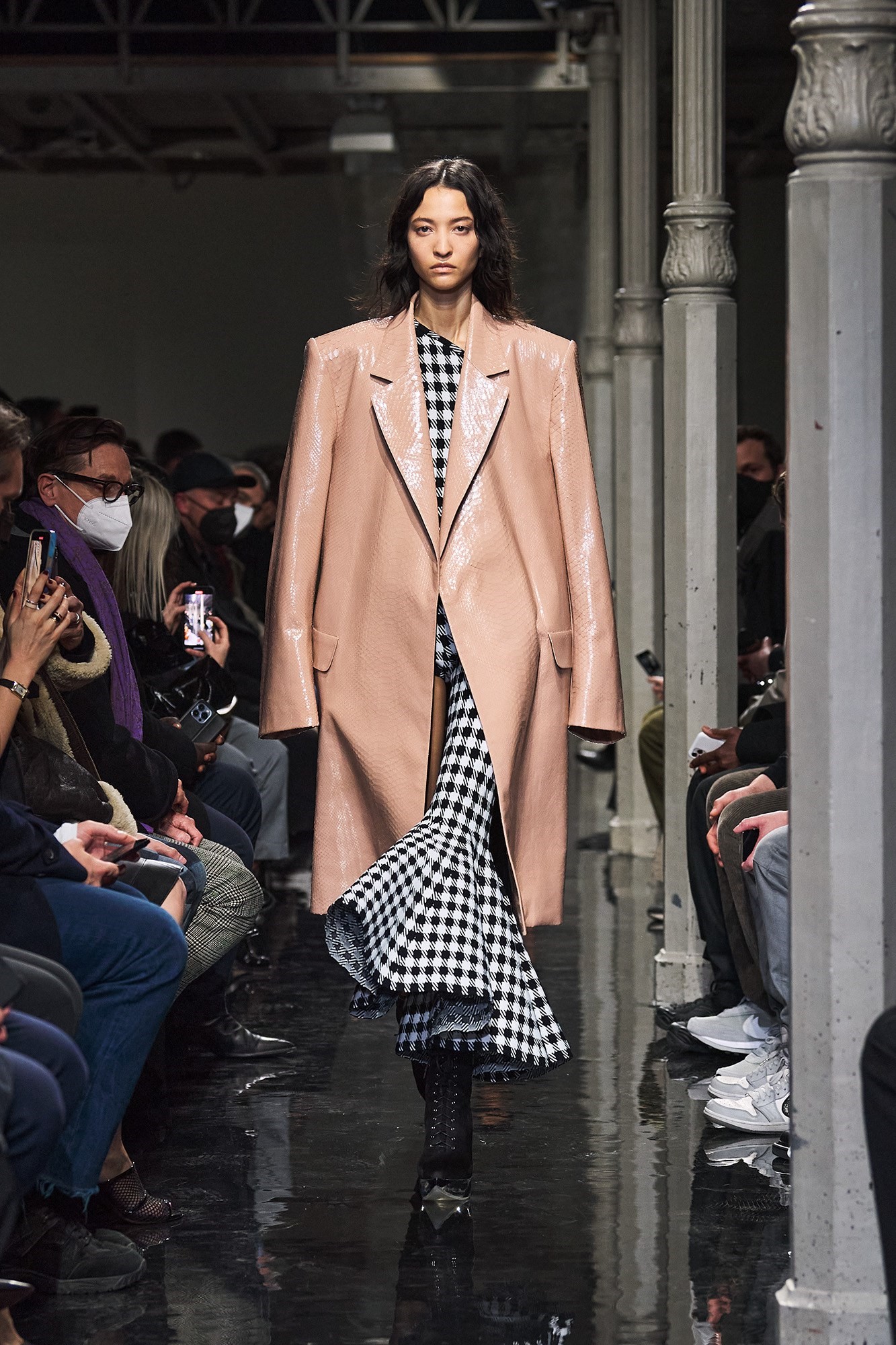
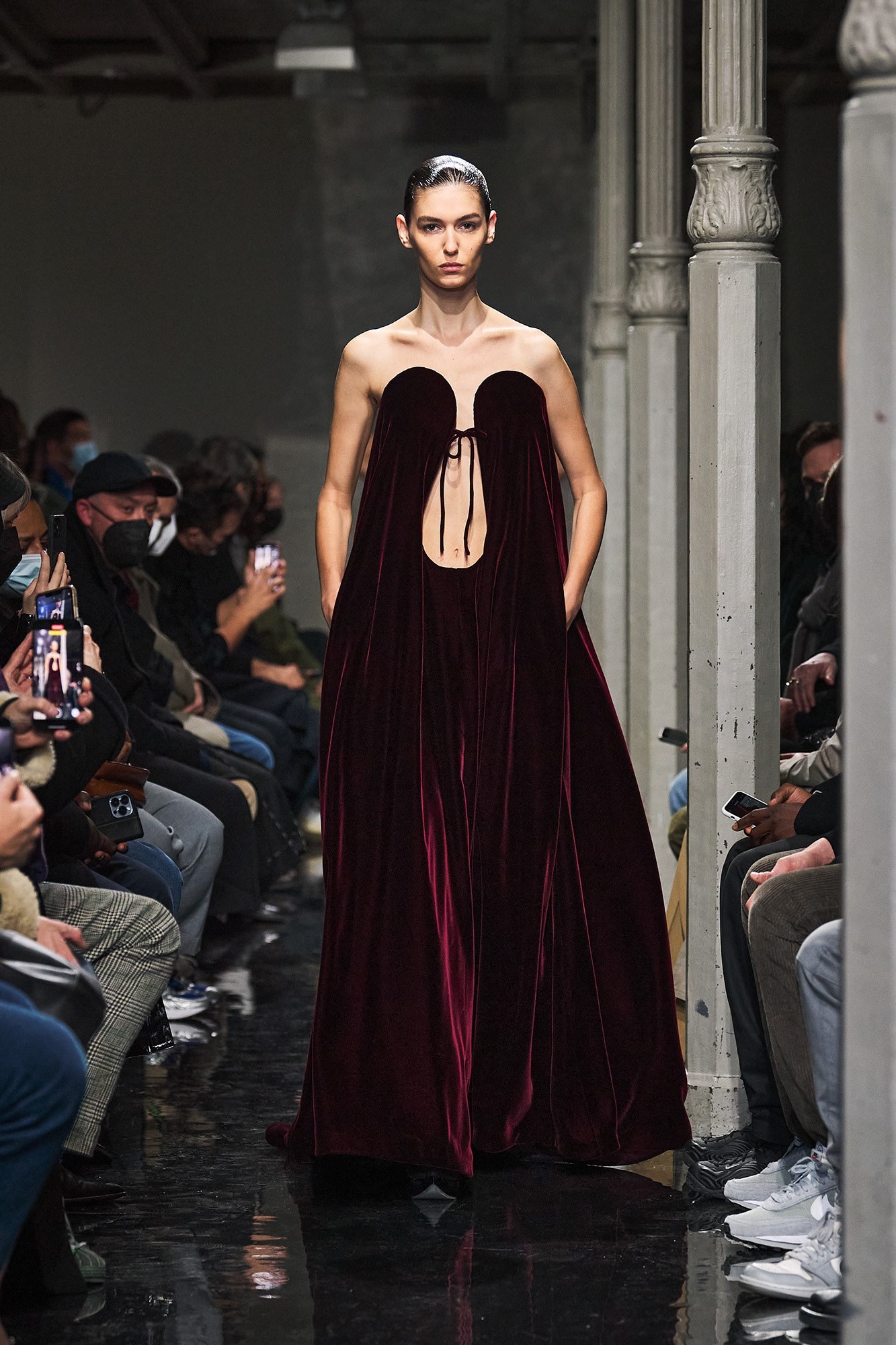
All those ideas found expression in this collection – freely explored, rather than slavishly kowtowed to. The collection fused ready-to-wear and couture, presented for a self-determined season Alaïa dubbed Summer-Fall. And there were homages to the obsessions of Alaïa, which Mulier himself shares – he created shoes with heels inspired by Jean Prouvé, who Alaïa collected (he slept in a petrol station designed by Prouvé). And he collaborated with the Picasso estate to create a series of dresses translating the artists’ ceramics into embroideries across knitwear, craft that embraced the three-dimensionality that so characterised Alaïa’s clothes, with silhouettes that define the female form. There was also a cheeky sense of humour – quintessential Alaïa. Pulled over the mouth and nose, the knits had faces, bodies naively scrawled, as if both shifting the designs of the originals to a new form and also tracing the bodies beneath.
Alaïa’s own signatures were also explored: the checks of his famous ‘Tati’ collection; his solid, velvety knits with unexpected hold, bounce and volume; the meandering décolletage of a dress he called the ‘Carla’, christened after Carla Sozzani who was fired as editor of Italian Elle after putting it on the cover, because they wanted her to only feature Italian designers. She is, like Azzedine was, a rebel at heart. And there was also a rebellion in this collection, in its proposition of unexpected, unanticipated codes for Alaïa, new shapes and forms released into the glossy, patent-floored space of what Pieter Mulier called the ‘cathedral’ of his exposition space on the rue de Moussy. This was his homage to Alaïa’s legacy and life’s work, and it has only just begun.
